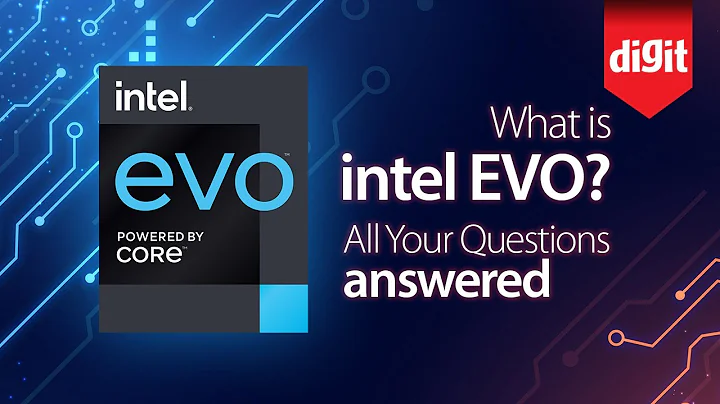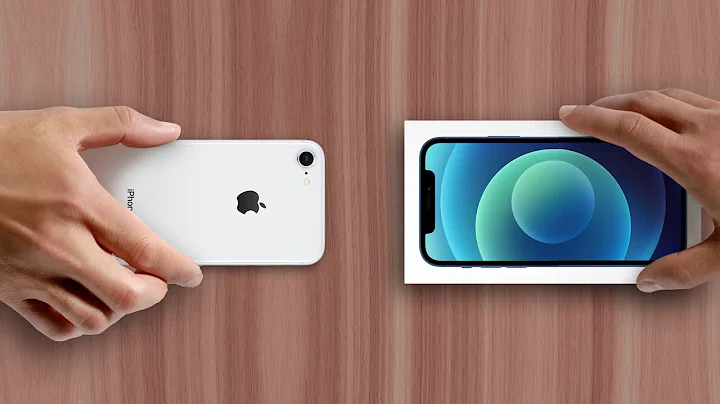Intel 's Project Athena has been implemented for quite some time. This plan is a plan developed by Intel and many OEM manufacturers to provide consumers with an excellent user experience. At present, Intel has specifically built Project Athena into Evo certification, mainly focusing on thin and light notebooks. As users' requirements for the comprehensive performance of notebooks continue to increase, the test projects of Intel's Evo program have also kept pace with the times. At present, Intel has upgraded the Evo certification to 3.0. In addition to traditional battery life and CPU performance, in view of the current popularity of online classes and video conferencing, Intel has also put forward requirements for the front camera of notebooks, which must meet at least 1080P resolution.

However, some people may ask why Intel believes that Evo certification will be in line with consumers' daily usage habits. After consumers use Evo-certified notebooks, their actual experience is similar to what the official claims. And there are many kinds of software on the market to evaluate the performance of the whole machine. Why must the Intel Evo test be the most accurate? What aspects does it test during testing? In this regard, Intel invited many media to introduce the test projects and test methods of Intel Evo 3.0 in detail. Intel also hopes to let more people know about Evo certification. How does
ensure a realistic experience?
So what exactly is Evo certification? Evo certification is Intel's joint effort with major OEMs to test the overall performance of notebooks in real use environments rather than laboratory environments for the purpose of actual user experience, including but not limited to performance, battery life, transmission speed, camera quality, etc. The third version of the Evo standard also increases the demand for conferencing applications. For example, it needs to be equipped with a 1080P camera, support 12th generation Core processors and WiFi 6E, and it also needs to meet dynamic background noise cancellation to make the meeting effect better, and the notebook needs to respond quickly anytime and anywhere.
partner support
Katherine Song, senior director of global business development at OmniVision Group, said that in order to achieve support for 1080P resolution cameras in Intel Evo 3.0, the architecture needs to be adjusted, and Intel has also done a lot of work on this, and Starting this year, HD cameras on laptops will explode. Yang Jinping, general manager of the marketing department of storage manufacturer Yilian, said that Yilian is the first domestic manufacturer to pass the Intel Evo complete machine certification for PC SSD, and has also specially customized and optimized the SSD products according to the requirements of Intel Evo certification. , it can be said that it is precisely because of its many partners that the Intel Evo 3.0 standard can meet the real needs of consumers.

So how does Intel ensure a realistic experience? In today's media communication meeting, Intel listed a number of test projects to show how it simulates the real user experience. Intel takes the battery life test of laptops as an example to tell you how Intel tests. The first is the setting conditions for battery life. For example, when many laptop manufacturers promote battery life, they often set extreme conditions, such as a brightness close to 0 nits , and turn off WiFi and many applications. The test results are indeed very beautiful, but this However, it far shows the actual user experience, because it is almost impossible for users to experience actual applications at 0 nits brightness and with almost all applications closed. So testing like this is completely meaningless.
Intel's test method is to set the screen at the mainstream 250 nits, start WiFi, and open some application software at the same time to conduct a battery life test. Intel said that after a long period of testing, it found that the notebook's screen brightness has a negative impact on battery life results. The impact is very serious, and 250 nits is the brightness currently used by most users when using notebooks, and opening application software is also in line with users' normal usage habits. Therefore, the results obtained in the Evo test are not much different from the normal use by users.

In addition to battery life results, Intel also showed performance tests, and the performance tests here refer to performance when using battery rather than power supply.Compared with power supply, battery power supply generally provides lower power. Therefore, when manufacturers perform adjustments, they often reduce the power of devices such as CPU and GPU. As a result, the performance is not as strong as advertised, let alone some CPUs. There may even be a performance loss of 30% to 40%. Intel also adopts an independent scoring standard for the performance of notebooks on battery. Evo-certified notebooks also need to meet the performance on battery.
In addition, in daily applications, Intel also simulates the normal use of users. For example, after opening a browser, several tabs are opened, and office software, chat software, or conferencing software are opened at the same time. Although everyone's computer usage habits are different, the overall usage habits are not much different. Intel also simulates the experience of real users as much as possible to obtain the most objective data. What is the difference between
and other testing software?
Of course, in addition to Intel's set of standards, a large number of test software has emerged on the Internet, which can also test the comprehensive performance of notebooks, including battery life, office and game performance. Among them, PCMark 10 should be a very outstanding software and is widely used. Used on a large scale. So compared to PCMark 10, what are the differences between Intel's Evo test? We take the PCMark 10 and Evo battery life tests as examples to illustrate. The first is PCMark 10. The test items include productivity, web browsing, and video playback. Productivity is document browsing, and video browsing involves opening a video APP and playing it. The real applications are Chrome and LibreOffice, and PCMark 10 does not test the cloud service function.
Intel's Evo's test projects are even richer. Productivity options include email, document editing, spreadsheets and PPT, which is actually Office family portrait. The video here is for video, audio and screenshot sharing.

In addition, in real applications, Evo tests include Office 365, Chrome, YouTube, Spotify and ZOOM. These applications include office applications, web browsing, video processing, music and video conferencing, which can basically simulate ordinary consumers. Daily applications, and the Evo test will also test cloud applications, that is, network performance, so the Evo test projects are closer to the real experience, and the conclusions drawn are also in line with the users' real usage scenarios.
simulates real use and is responsible for performance
For a long time in the past, the actual use of computers by users was actually very different from the real level advertised by manufacturers, especially in terms of battery life and battery-powered performance. This is the difference between the two testing environments. The test results under extreme conditions provided by some manufacturers are indeed satisfactory, but it is difficult for ordinary people to achieve it. Therefore, we need a test project that can simulate the real environment, and Intel Evo can It came into being for such a scenario.

Sudha Ganesh, Intel Vice President and General Manager of Client Platform Experience
Sudha Ganesh, Intel Vice President and General Manager of Client Platform Experience, said that in order to continue to improve the experience of the entire product, Intel is not only improving the CPU or SoC, but also improving the overall product experience. The entire platform and different components on the entire machine have been greatly improved. In addition, Intel has also spent a lot of manpower and material resources to work with partners to improve the real user experience.

It can be said that although Evo certification cannot completely replace consumers' usage scenarios, it can simulate consumers' daily office usage. It can be said that purchasing an Evo-certified notebook can meet consumers' usage needs, at least in terms of comprehensive performance. And with the continuous development of future notebooks, Evo certification will continue to be improved and updated. In short, Intel's goal in launching Evo is to give users the most authentic and objective evaluation by satisfying consumers' real use. Of course, as the leader in the semiconductor industry, Intel has the strength and resources to guide the industry towards a healthy track.





















